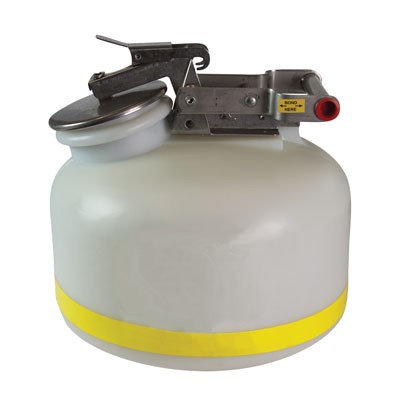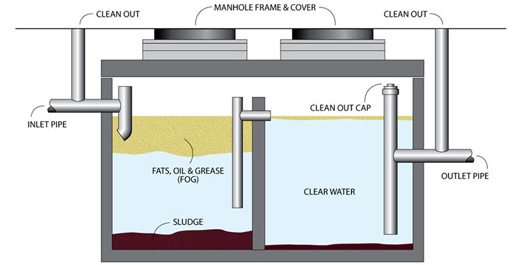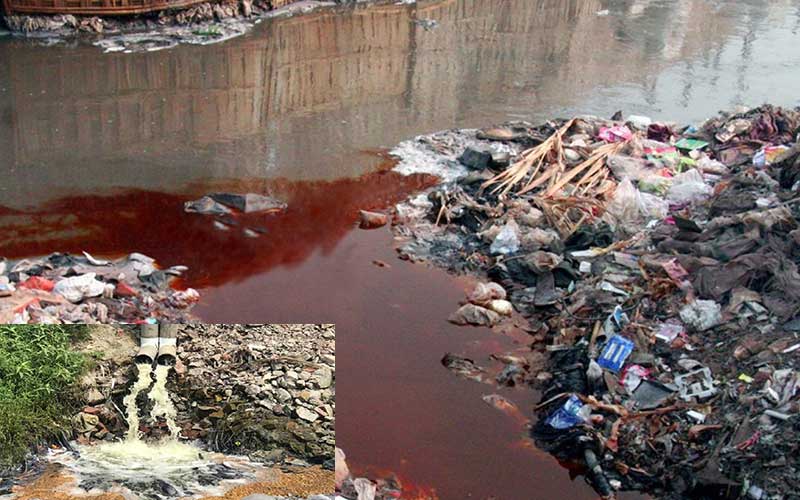Cutting-edge Industrial Wastewater Treatment Solutions: Protecting the Atmosphere
Cutting-edge Industrial Wastewater Treatment Solutions: Protecting the Atmosphere
Blog Article
How Liquid Waste Disposal Functions: A Detailed Summary of Methods and Technologies Used

Overview of Liquid Waste Kind
The intricacy of liquid waste kinds necessitates a thorough understanding of their attributes and ramifications for disposal. Fluid waste can extensively be classified into several kinds, consisting of industrial, local, farming, and contaminated materials. Each category exhibits unique properties, needing particular administration methods to minimize environmental and health and wellness threats.
Industrial fluid waste stems from producing processes and typically consists of a variety of pollutants, such as heavy metals, solvents, and organic compounds. Metropolitan fluid waste, primarily comprising wastewater from households and industrial facilities, has organic issue, nutrients, and pathogens (industrial wastewater treatment). Agricultural fluid waste, consisting of overflow from farms, might consist of fertilizers, chemicals, and animal waste, presenting risks to water top quality and ecological communities
Harmful fluid waste is characterized by its toxicity, reactivity, or possible to trigger harm. This group consists of substances like acids, bases, and specific chemicals that require strict handling and disposal methods. Recognizing these diverse liquid waste kinds is vital for establishing efficient disposal approaches and making sure conformity with ecological regulations. Appropriate category and characterization are vital for applying suitable therapy methods and reducing the unfavorable influence on public health and the atmosphere.
Physical Therapy Methods

Testing is the first action, where larger particles and particles are gotten rid of from the fluid waste utilizing displays or grates. This process secures downstream devices from damage and guarantees smoother operation. Complying with screening, sedimentation utilizes gravitational pressure to separate solids from liquids. In sedimentation containers, larger bits work out near the bottom, forming a sludge layer, while the made clear fluid can be additional treated.
Filtering is another important approach that entails passing the fluid through permeable products, such as sand or membrane layers, to catch smaller fragments. This action improves the quality of the fluid, making it ideal for succeeding therapy procedures.

Chemical Treatment Techniques
Chemical therapy methods are important for successfully managing liquid waste, specifically in attending to dissolved and colloidal contaminants that physical techniques may not sufficiently get rid of. These methods make use of various chemical representatives to neutralize, precipitate, or change hazardous compounds right into less damaging kinds.
One typical approach is coagulation and flocculation, where chemicals such as alum or ferric chloride are added to advertise the gathering of suspended bits. This procedure enhances sedimentation, enabling less complicated removal of the resulting sludge. Furthermore, oxidation procedures, using agents like chlorine or ozone, are employed to break down intricate natural compounds and microorganisms, providing the waste safer for discharge or further therapy.
Neutralization is another crucial method, which readjusts the pH of acidic or alkaline waste streams to neutral levels, preventing potential injury to downstream systems see post and the environment. Additionally, advanced oxidation processes (AOPs) use mixes of oxidants and ultraviolet light to break down relentless toxins, attaining a greater degree of therapy performance.
Organic Therapy Procedures
Organic therapy procedures play a crucial role in the monitoring of fluid waste by making use of microbes to disintegrate raw material and lower impurity degrees. These procedures can be extensively categorized right into cardiovascular and Recommended Site anaerobic treatments, each employing specific microbial communities to accomplish effective waste degradation.
Aerobic therapy entails the usage of oxygen to promote the malfunction of organic materials by microorganisms. This procedure is frequently carried out in activated sludge systems, where oygenation tanks provide a helpful atmosphere for microbial development, causing the oxidation of organic pollutants. The resultant biomass can be divided from treated effluent through sedimentation.
In comparison, anaerobic therapy occurs in the lack of oxygen, counting on various germs to break down raw material. This method is specifically beneficial for high-strength waste, as it produces biogas, a renewable resource source, while reducing sludge production. Technologies such as anaerobic digesters are regularly employed in commercial and local applications.
Both anaerobic and cardio organic therapies not only minimize the ecological impact of fluid waste however additionally assist in Website source recuperation, making them necessary elements of sustainable waste administration approaches. Their performance, adaptability, and efficiency sustain their widespread application throughout numerous industries.
Arising Technologies in Disposal
Ingenious strategies to liquid waste disposal are quickly advancing, driven by developments in innovation and an increasing emphasis on sustainability. Among these emerging innovations, membrane layer bioreactors (MBRs) have actually gained traction for their ability to combine biological treatment with membrane layer purification, causing high-grade effluent that can be recycled in various applications. MBRs enable smaller footprints and a lot more reliable procedures contrasted to typical systems.
Another promising development is using anaerobic food digestion integrated with nutrient recovery modern technologies, which not just deals with fluid waste yet additionally creates biogas and recoups beneficial nutrients like nitrogen and phosphorus. This twin benefit enhances source performance and minimizes ecological influence.
In addition, progressed oxidation procedures (AOPs) are being embraced for the deterioration of complicated organic pollutants. These methods make use of powerful oxidants and stimulants to break down impurities at the molecular degree, using an extremely effective option for tough waste streams.
In addition, the assimilation of man-made knowledge and device discovering in waste management systems is enhancing functional performance and anticipating upkeep, leading to decreased prices and boosted ecological compliance. These innovations reflect a substantial change in the direction of even more effective and sustainable fluid waste disposal practices.
Conclusion
In final thought, efficient liquid waste disposal necessitates an extensive understanding of various methods and innovations. The assimilation of physical, chemical, and organic therapy techniques ensures the effective administration of varied waste kinds. Furthermore, the development of cutting-edge technologies boosts therapy efficiency and advertises sustainability in waste administration techniques. By constantly advancing these methodologies, it comes to be possible to resolve the expanding difficulties connected with liquid waste, eventually contributing to ecological security and resource recuperation.
Liquid waste disposal is an essential aspect of environmental management, needing a detailed understanding of numerous strategies and modern technologies customized to various waste kinds. Fluid waste can generally be classified right into numerous kinds, consisting of commercial, metropolitan, farming, and unsafe waste. Agricultural fluid waste, consisting of drainage from farms, might contain fertilizers, pesticides, and pet waste, posing risks to water quality and environments.
Numerous physical therapy techniques play an important role in managing liquid waste effectively - industrial wastewater treatment.In conclusion, reliable fluid waste disposal demands a thorough understanding of various methods and innovations
Report this page